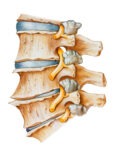
Improve Your Patients’ A.D.L.’s
If a patient is challenged by some progressive weight gain or battling a persistent overweight or obese condition, chances are you hear them making statements such as “I just want to be able to ___________ again!”
In fact, if you are observing closely, you are probably able to detect and/or measure restrictions of movement or even document limitations in their Activities of Daily Living (ADL’s) directly related to their weight issue.
As weight loss clients succeed in our program, they (and we, as providers) typically notice their MOBILITY improving and their ABILITY to participate and ENJOY many simple, meaningful and important activities is restored. We routinely hear awesome reports like …
- “Stairs do not take such a toll on me!”
- “I could actually get out and enjoy my vacation this year!”
- “I love being able to keep up with my children!”
- “It felt so good to walk along the beach again!”
- “Work is easier now that I can move better!”
- “I can work in the yard and not be sore the next day!”
- “I was able to fit in and ride the roller coaster for the first time in years!”
- And many, many other similar statements.
These things are what it’s all about. They are the difference between your patients just feeling a little better and them getting back to REALLY LIVING!
Isn’t that what we all want for our patients?
If so, then as wellness providers we must be effectively addressing their weight issues! Besides the obvious suggestion of having a science-based and proven program for this LARGE sector of your patient base, the other significant thing to do is continually EDUCATE them.
WHY do their joints hurt so much when they are battling obesity or an over-weight condition?
An article in the Harvard Medical School newsletter Healthbeat entitled “Why weight matters when it comes to joint pain” shares some helpful insight about this. We would encourage you to see the link below, check it out and maybe share it with patients who could benefit.
Be sure your patients realize there are two big things that come into play with the joint pain and reduced mobility associated with being over-weight. (1) excess weight causing more pressure and (2) inflammation. Relay this one point made in the Harvard article:
“Let’s look at weight and your knees. When you walk across level ground, the force on your knees is the equivalent of 1½ times your body weight. That means a 200-pound man will put 300 pounds of pressure on his knees with each step. Add an incline, and the pressure is even greater: the force on each knee is two to three times your body weight when you go up and down stairs, and four to five times your body weight when you squat to tie a shoelace or pick up an item you dropped”.
Whoa! Once your patients better understand these numbers, it gets easy for them to understand how an extra 30, 50, 100 or more pounds adds some serious extra pressure on the knees! Of course, the same holds true for the spine, hips, ankles, feet and other weight bearing joints. Could this be that next level of teaching you need to do to help them understand WHY they are feeling the way they do?
It’s also important for them to realize that the reason for the pain, discomfort and limited motion can be more complicated than JUST having more weight and pressure on their joints. It often involves the more progressive and serious condition of OSTEOARTHRITIS (OA). As you know, this is a degenerative joint disease, in which a person loses cartilage and progressively destroys the bones of their joints. While aging often makes such a condition more common, there are certainly factors which accelerate or worsen OA early on in life.
Scientific study after study has demonstrated that more weight will typically cause joints to degrade more rapidly. That’s pretty basic and easy to understand. But keep in mind (and remind your patients) that OA is caused by more than JUST extra weight. It’s also clear that there is a correlation between the presence of excess fat tissue and INFLAMMATION.
So, now a person has the combination of excess joint load plus the inflammatory related chemical and hormonal environment that excess body fat creates. This results in a debilitating 1-2 PUNCH that hits their joints … and their LIFE right where it counts!
Like so many other chronic and progressive conditions, OA is a VICIOUS CYCLE. Think about it …
- Something in your patient’s life causes them to experience weight gain.
- They grow frustrated, self-conscious and have less energy.
- Their joints ache and their body may feel lethargic, stiff and hurt overall.
- So, they move less.
- Moving less and the inflammation associated with excess fat means their joints stiffen.
- Less activity creates muscle weakness.
- Muscle weakness means it’s even more difficult to move when they DO want or need to!
- Less movement means even more weight gain … causing even more stress on the joints.
- This all leads to even less cushion in the joints. The OA condition worsens.
- Meaning even more pain … and more limited activity.
- And on … and on … and on. It’s a downward spiral for them!
There is often a misconception among wellness providers that people primarily want to lose weight to “look better”. Of course, that is a strong and positive motivator for many people. However, other patients are inspired to take weight off because of a serious medical diagnosis (or the threat of getting one) such as Type 2 Diabetes, cardiovascular disease, etc. These are also good reasons for them to consider weight loss.
Yet, one of THE most commonly reported POSITIVE “side effects” of losing weight is JOINT RELIEF and your patients being able to, once again, DO THINGS they love to do … to PARTICIPATE in activities again with family and friends that have been missed or put on hold because of the aches, pains, stiffness and immobility related directly to their weight challenge. You can help with this.
Are you only addressing symptoms and the EFFECTS your patients are reporting? Or are you getting to the root CAUSE and ultimately addressing LIFESTYLE with your patients? Joint pain and associated functional limitations of daily LIVING are meaningful to them.
Don’t let them settle for just being alive.
It’s time to help them LIVE again!
We Can Help You Help More People in More Ways.
Reference source:





